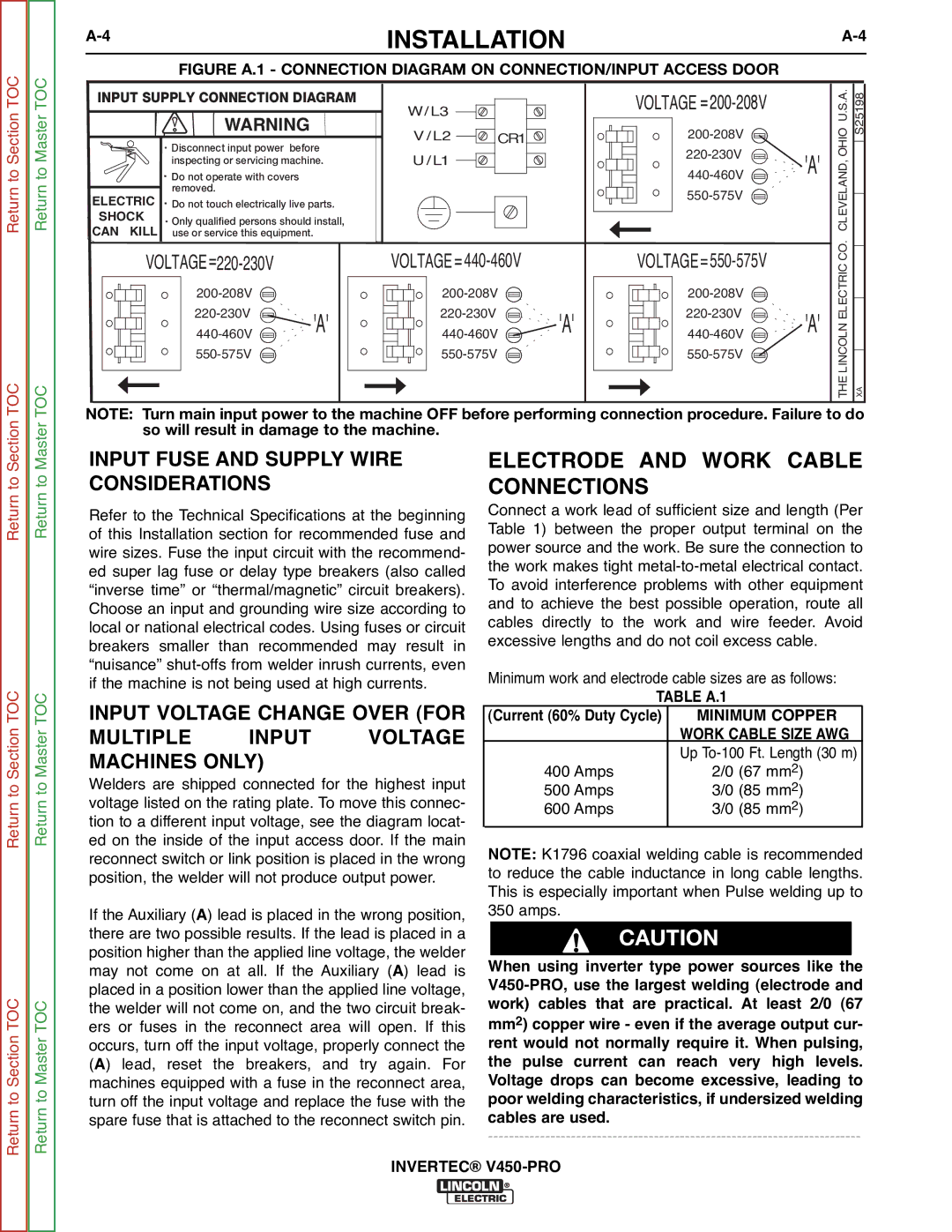SVM199-A specifications
Lincoln Electric SVM199-A is a highly advanced welding machine that has garnered attention for its robust features and innovative technologies. This piece of equipment is tailored specifically for professionals in the welding industry, providing a range of functionalities that enhance productivity and efficiency.One of the standout features of the SVM199-A is its Dual Voltage Input capability. This allows for flexibility in energy sources, making it suitable for a variety of job sites and applications. Users can easily switch between 208V and 230V, ensuring that they can operate efficiently regardless of the electrical setup available.
The machine is equipped with a powerful inverter-based design that significantly reduces its overall weight without compromising performance. This technology not only increases portability but also delivers greater energy efficiency, resulting in lower operational costs. The inverter design allows for quicker arc starts and smoother operation, which is especially beneficial for intricate welding tasks.
The SVM199-A boasts advanced digital controls that simplify the operation for both novice and experienced welders. The intuitive interface allows users to easily set and monitor welding parameters, facilitating optimal settings for various materials and thicknesses. This level of control ensures consistent weld quality and minimizes the risk of defects.
Another impressive characteristic of the SVM199-A is its multi-process functionality. It supports MIG, TIG, and Stick welding, making it versatile for various applications, from thin sheet metal work to heavy-duty repairs. This adaptability is ideal for contractors and welding professionals who often switch between different welding processes.
Additionally, the machine features a robust cooling system designed to prevent overheating during extended use. This capability not only prolongs the lifespan of the machine but also ensures reliable performance even in demanding conditions. The SVM199-A is built to withstand the rigors of frequent usage, emphasizing Lincoln Electric’s commitment to durability and quality.
Safety is paramount in welding operations, and the SVM199-A incorporates several safety features, including thermal overload protection and a protective housing design. These elements work together to safeguard both the machine and the operator, promoting a secure working environment.
In summary, Lincoln Electric's SVM199-A stands out in the welding equipment market due to its combination of advanced technology, user-friendly design, and exceptional performance capabilities. Whether for industrial applications or specialized projects, this machine is engineered to meet the rigorous demands of professionals, making it a valuable addition to any welding toolkit.

